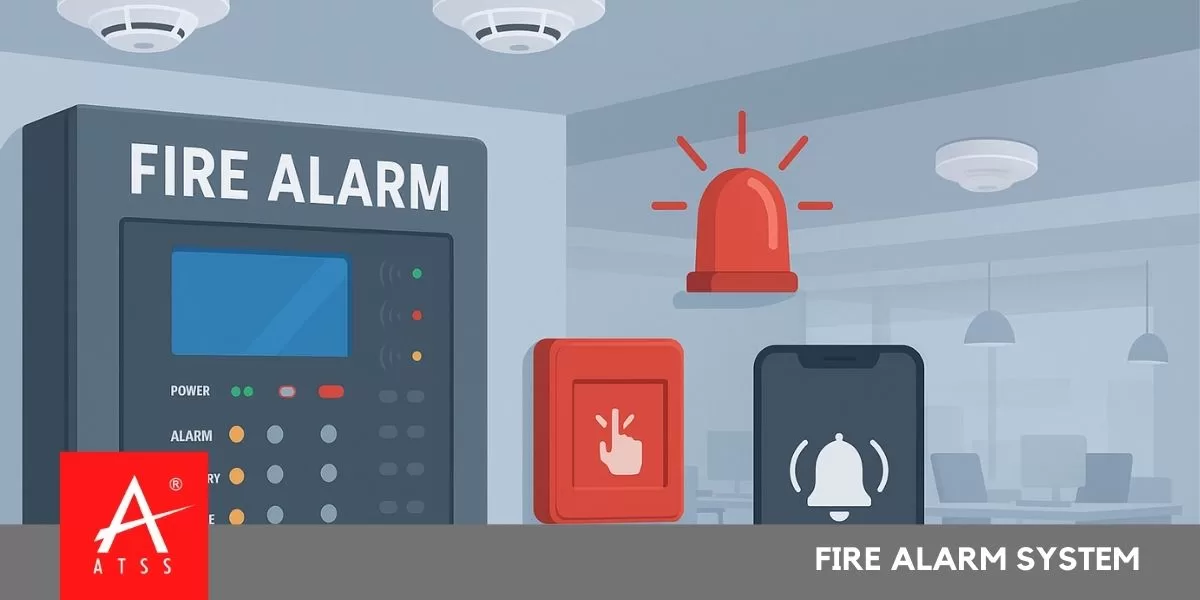Fire Alarm System: The Ultimate Guide to Fire Safety
Protect lives and property with the right Fire Alarm System. Discover types, installation, and maintenance tips in this complete 2025 guide.
Introduction: Why Every Building Needs a Fire Alarm System
Did you know that in less than five minutes, a small flame can turn into a major fire? According to the National Fire Protection Association (NFPA), most fire-related deaths happen in buildings without a working fire alarm system. Fires spread faster than many people imagine, and without early warning, safe evacuation becomes almost impossible.
That’s where a Fire Alarm System steps in. Whether at home, in an office, or a commercial complex, fire alarms provide the crucial seconds needed to escape danger and call for help.
This guide covers everything you need to know about fire alarm systems — from types and installation to maintenance and monitoring. By the end, you’ll understand how to choose, install, and maintain the right fire alarm system for your needs, ensuring the safety of people and property.
What Is a Fire Alarm System?
A Fire Alarm System is a network of devices designed to detect smoke, heat, flames, or carbon monoxide and alert occupants of a potential fire. These systems don’t just sound alarms — they also connect to monitoring centers, emergency lighting, sprinklers, and even security systems for complete fire protection.
The core purpose of any fire alarm system is early detection and warning, giving people enough time to evacuate safely and emergency responders time to act.
Types of Fire Alarm Systems
Choosing the right fire alarm system depends on your property type, budget, and compliance requirements. Here are the most common types:
1. Conventional Fire Alarm System
- Divides a building into zones.
- Each detector in a zone is connected to the same circuit.
- When triggered, the control panel shows which zone is affected.
- Best for small to medium-sized buildings.
Example: If a smoke detector in Zone 3 activates, responders know the fire is somewhere in that section, but not the exact location.
2. Addressable Fire Alarm System
- Each device (detector, sensor, or manual call point) has a unique address.
- The control panel shows the exact location of the alarm.
- Highly reliable, scalable, and efficient.
- Best for large commercial spaces, hospitals, schools, and factories.
Example: The system can pinpoint “Smoke Detector – Room 302,” saving time and reducing confusion during emergencies.
3. Wireless Fire Alarm System
- Uses radio signals instead of wiring.
- Easier and faster to install.
- Ideal for historic buildings or rented properties where drilling is restricted.
- Simple maintenance with battery-powered devices.
Note: While convenient, they require regular battery checks and may cost more upfront.
4. Commercial Fire Alarm Systems
- Advanced systems designed for businesses, warehouses, malls, and offices.
- Often integrated with sprinklers, emergency lights, and access control.
- Can handle high device capacity and complex zoning.
These systems go beyond basic alerts, ensuring comprehensive fire safety.
5. Residential Fire Alarm Systems
- Designed specifically for homes and apartments.
- Include smoke detectors, carbon monoxide sensors, and heat detectors.
- Many come with smartphone connectivity for remote alerts.
- Affordable, easy to install, and user-friendly.
Pro Tip: For maximum safety, install interconnected alarms so when one goes off, all alarms sound.
Fire Alarm System Components
Every fire alarm system has several key components that work together:
- Control Panel: The brain of the system, showing alerts and faults.
- Detectors: Smoke, heat, or flame sensors that identify danger.
- Manual Call Points (MCP): Allow people to trigger alarms manually.
- Sounders and Strobes: Provide audible and visual alerts.
- Power Supply: Includes main power and backup batteries.
- Monitoring Service Connection: Sends signals to emergency responders.
Fire Alarm Installation: What You Need to Know
Installing a Fire Alarm System requires careful planning. Here’s the process:
1. Planning and Design
- Conduct a fire risk assessment.
- Decide detector types and placement (e.g., kitchens need heat detectors, not smoke detectors).
- Follow local building codes and fire safety regulations.
2. Choosing the Right Installer
- Always hire a certified fire alarm installer.
- Ensure they have experience in both residential and commercial projects.
- Ask for compliance documentation after installation.
3. Testing and Inspection
- After installation, test every device.
- Check wiring, sensors, and control panel functions.
- Schedule routine inspections to ensure reliability.
Fire Alarm Maintenance: Ensuring Long-Term Safety
Even the best fire alarm system is useless if not maintained. Here’s how to keep it reliable:
1. Regular Maintenance Checks
- Test smoke and heat detectors monthly.
- Replace batteries annually.
- Clean detectors to prevent dust interference.
- Log every check for compliance.
2. Fire Alarm Monitoring Services
- Provides 24/7 surveillance.
- If an alarm is triggered, monitoring centers notify fire departments immediately.
- Reduces response time and saves lives.
3. Compliance and Certification
- Regular inspections ensure systems meet fire safety regulations.
- Obtain certifications required for commercial and residential properties.
- Non-compliance can lead to penalties or insurance issues.
Choosing the Best Fire Alarm System for Your Needs
For Homes
- Opt for wireless or interconnected smoke alarms.
- Choose smart alarms for mobile notifications.
- Ensure coverage in all bedrooms, hallways, and living areas.
For Businesses
- Go for addressable fire alarm systems with scalability.
- Integrate with sprinklers, emergency lights, and access control.
- Plan for future expansions.
Budget Considerations
- Don’t compromise safety for cost.
- A reliable fire alarm system is a long-term investment that protects lives and property.
Why Fire Protection Services Are Essential
Fire protection services go beyond installing alarms. They provide:
- Risk assessments
- System installation
- Monitoring and maintenance
- Compliance certification
By partnering with professionals, you ensure ongoing safety, avoid legal issues, and protect valuable assets.
Conclusion: Stay Protected, Stay Prepared
A Fire Alarm System is not just a legal requirement — it’s a lifesaver. From homes to high-rise offices, early detection is the difference between survival and tragedy.
By understanding the types of systems, choosing professional installation, and committing to regular maintenance, you can create a safer environment for everyone inside your property.
👉 Take action today:
- Evaluate your current fire safety setup.
- Schedule a professional inspection.
- Invest in a reliable fire alarm system that fits your needs.
Your safety — and the safety of those around you — starts with a working fire alarm system. Don’t wait for an emergency to realize its importance. | Call 9150012345
Burglar Alarm | CCTV Camera | Access Control | Time Attendance | Biometric Machine

